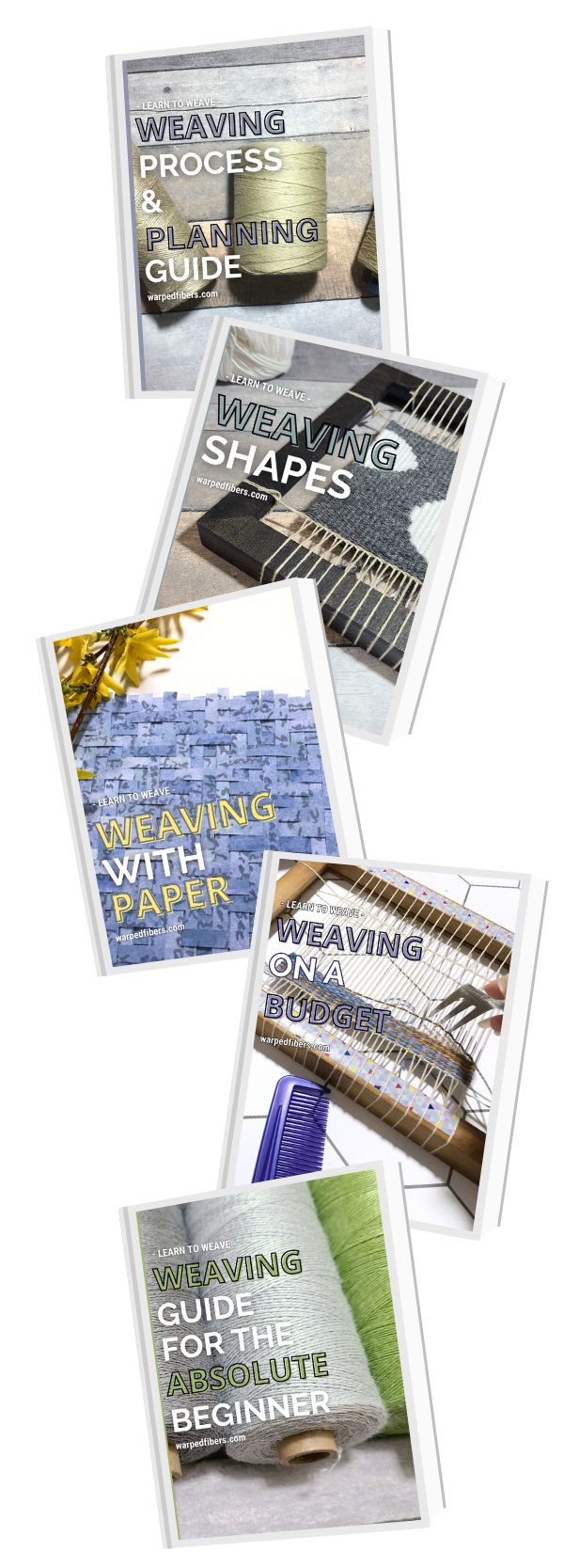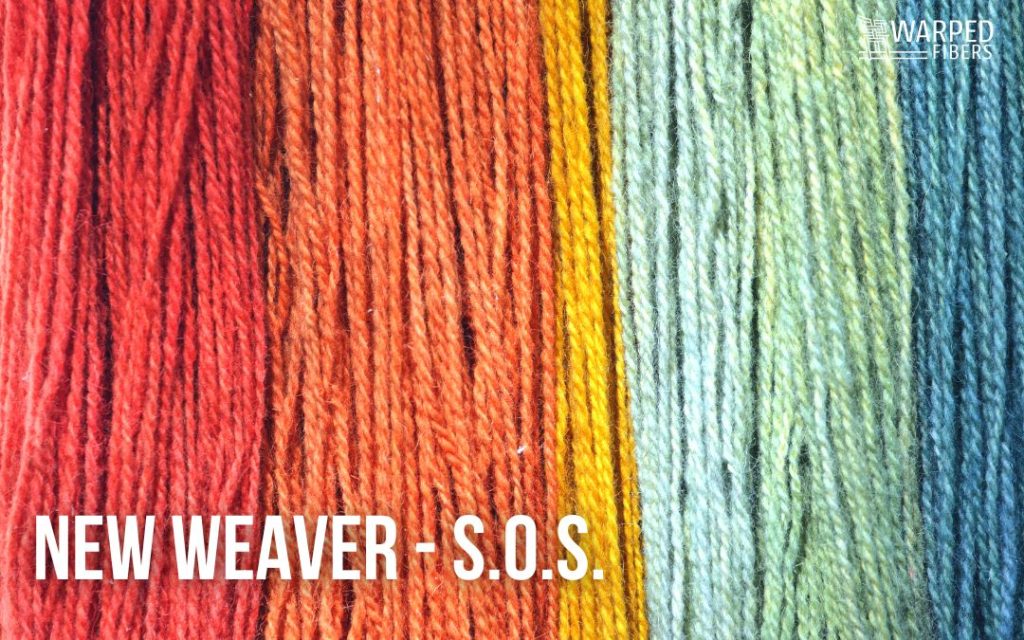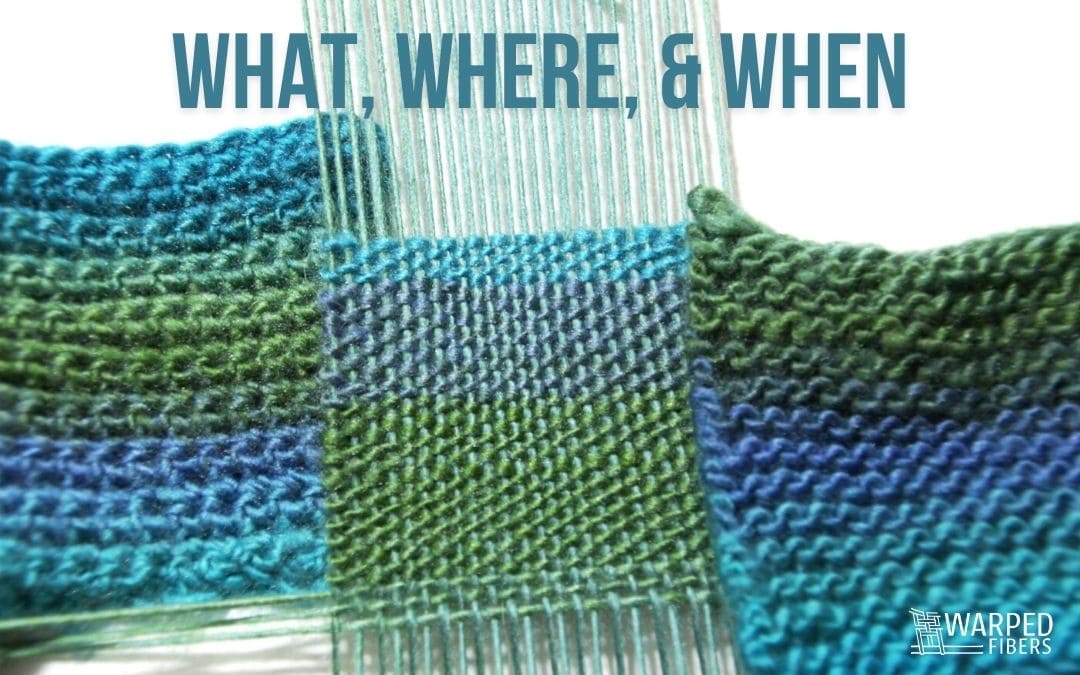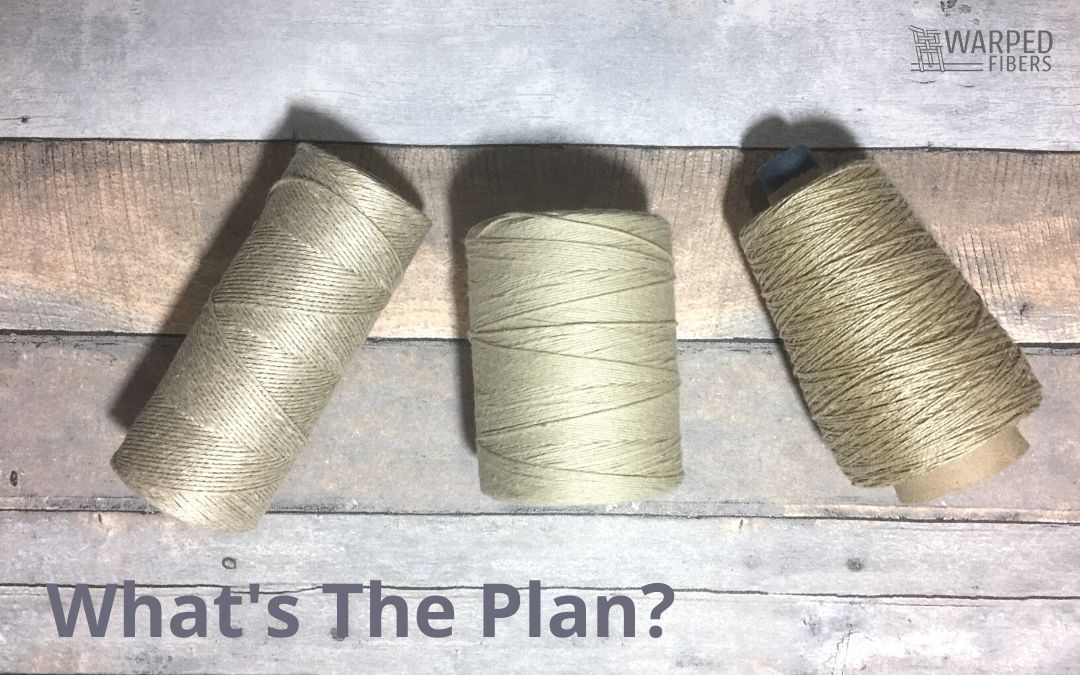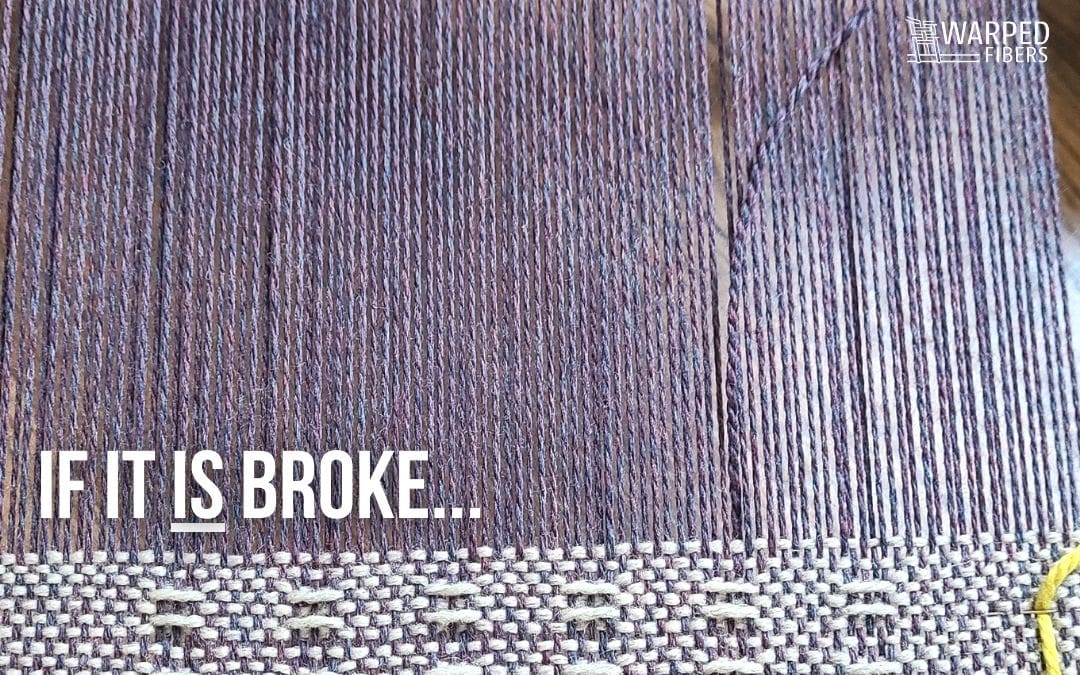Mistakes happen to even the best and most experienced weavers.
I’m going to say that again…
Mistakes happen to even the best and most experienced weavers. Sometimes those mistakes are technical, sometimes they result from a lack of planning (or incorrect planning), they could also be from choosing the wrong colors, and really anything in between. So when this happens your choice is usually to un-weave.
I know!
I know.
Nobody wants to take apart something that they have just spent a lot of time on. It is not fun, but sometimes it is necessary.
Jump To:
- Falling in and out of love with your work
- The Sunk Cost Fallacy
- When to stop and when to un-weave
- Why you shouldn’t cut your weft (and why you should)
Falling in and out of love with your work
In my experience, creating has a cycle.
Let’s get dramatic for a moment:
The beginning of the cycle is the idea. This part is exciting! You figure out what you want to weave, you pick out your materials, you envision it, maybe sketch it out, and overall just have everything to look forward to.
Then you start to set up. Depending on what you are creating this may take some time. You may love it, you may hate it, but you still have a lot to look forward to so you get through it.
You start weaving! Yay! Things are great because you can see and feel it coming together. Your hard work setting up and planning is paying off!
Is it done yet?
Maybe I should have made it smaller / bigger / darker / brighter / denser / looser / etc. etc.
I’m getting close to finishing! I’ve made it through and it’s the perfect size / color / density / etc.
I can see the end! That really wasn’t so bad.
I love this weaving.
/ dramatization
Alright, so obviously this is not the case for every weaving and every weaver, but the point is that it is extremely common to go through a love it, hate it, and love it again relationship with your weaving or really any creative pursuit.
So when and how do we decide to keep going versus scrapping our project?
The Sunk Cost Fallacy
So maybe you have heard of this before as it relates to other things in life. Basically, the sunk cost fallacy says that just because you spent time on something does not mean you have to keep spending time on it. In this case, just because you started something one way, does not mean you have to continue that way or continue at all.
Continuing to spend time on a weaving just because you started it is not good for you or the weaving.
At the least, the weaving will take forever to finish and it will sit on your loom taking up space. Space that could be used for something that you do love.
What’s worse? Continuing like this could make it so you fall out of love with weaving!
So what do we do with this?
Sometimes this might mean scrapping the entire project to begin with and sometimes it might mean unweaving until you get to a point where you are happy again.
When to stop and when to un-weave
Ultimately, the choice as to what to do at this point will be up to you, but let’s take a look at some things you may want to consider when making your decision.
Do you have any excitement for this weaving anymore?
I am not talking about as it currently is, but more what it could be. Do you still like your original idea? Do you still like the colors, the pattern, or really anything else about the weaving?
You may not have to start over completely. If it is just your weft that isn’t agreeing with you then you can un-weave it and start fresh. If it is your warp that isn’t working, then you will have to decide if you can save the warp. While we don’t want to hold onto something just because it took a long time to create, that doesn’t mean we want to waste yarn if we can help it! Just one of the many great things about weaving is that an unwoven warp is essentially a clean slate!
Even if the current warp doesn’t work for your current weaving, you may consider using it for something else and coming back to your original weaving a different time. This way you are not wasting anything.
Of course, when it is time to work on the original weaving again, we need to make sure that the original issues don’t follow it.
Take some time to diagnose your weaving and figure out how to not have the same issue again. Pay attention to what it was the did not sit right with you. Maybe create a sample with your new parameters before setting out to do a final piece. Samples are a really great way to try out an idea before you commit to it fully. And with weaving which can take a significant amount of time to set up, it is better to spend some time to sample rather than spend time unweaving later.
This could help clear up pretty much any issue that you may have encountered that led you to wanting to start over to begin with.
There are now 2 ways to take it – either purchase the whole course at once for a discount or “create your own” course by purchasing just the parts you want! Either way, get 10% off for being a member of the Warped Community!
Why you shouldn’t cut your weft (and why you should)
If the issue with your weaving is your weft then you really only have 2 options.
First option is to unweave your weft either entirely or to the point at which there was an issue.
This is generally the best option for starting your weft over. It ensures you get to use your weft again and don’t waste any expensive yarn!
Unweaving is basically the same as weaving – except backwards. So step on those treadles in reverse order or take your tapestry needle over instead of under to undo the previous pick.
TIP: Always make sure to wrap your freed weft around a shuttle or into a ball as you take it off to avoid annoying tangles. I would do this every few picks depending on the width of your weaving. Use your best judgement.
Second option is to cut your weft.
I use to be a weaver who said to NEVER cut out your weft. Generally, that is still true. Cutting out your weft is not only risky but potentially wasteful. Depending on how you cut out the weft you can’t really use that yarn for anything anymore. Except maybe as yarn scraps (which you could use in these projects.)
The more I weave, though, the more I am reminded that there is usually a time and a place for anything. That anything includes cutting out your weft instead of unweaving it.
Of course, my opinion on the matter is never the end all when it comes to your project. When it comes down to it, you do what is right for you. I recently cut my weft for a weaving that was not working for me and I am very happy I did.
I cut the weft instead of unweaving because I knew that if I spent the time to unweave then I wouldn’t have the desire to start the weaving over anytime soon. My tapestry also contained a lot of eccentric weft – which means an extreme amount of back and forth in small areas. Plus, I only had about 2 inches woven overall and decided the amount of yarn really wasn’t worth the time it would take to unweave.
Since cutting out my weft, I have woven more of this tapestry in the past few weeks then I did all of last year. It jumped me back into the “love it” part of my creativity cycle!
Regardless of what you decide to do, know that this creativity cycle happens to everyone! And even when you plan and plan and plan, sometimes, a weaving just doesn’t live up to what you want it too.
When it comes down to it, you should be weaving because you enjoy it. So do what you have to in order to make sure you keep enjoying it.
⇣ Love It? Share It! ⇣
You May Also Like
















